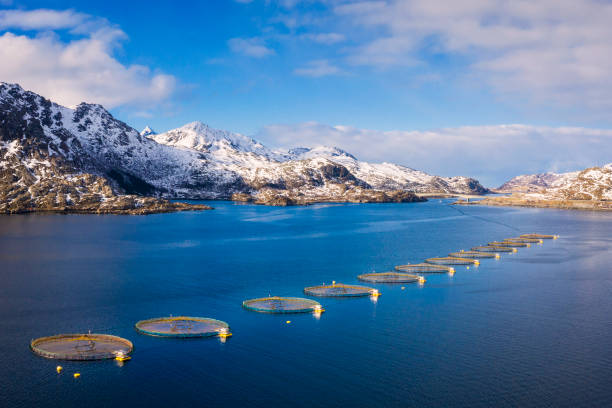Norway has long been regarded as a global pioneer in sustainability. The country’s magnificent scenery, abundant natural resources, and strong dedication to environmental care routinely earn it a spot as one of the world’s most sustainable. This blog article digs into Norway’s sustainability policies. It focuses on the important efforts that have moved the country to the forefront of the global sustainability movement. Norway, with its pioneering efforts in renewable energy and dedication to maintaining natural areas, provides vital insights and lessons for the rest of the globe.
Norway’s Commitment to Renewable Energy
One of the most outstanding qualities in Norway and sustainability is its commitment to renewable energy. Norway leads the world in hydropower, generating more than 90% of its electricity from hydroelectric units. In addition to hydropower, Norway is making significant investments in wind and solar energy. Norway’s offshore wind farms are among the world’s most modern, and the nation is quickly growing its wind power capacity. These activities are part of a larger goal to minimize dependency on fossil fuels and transition to a 100% renewable energy economy. Norway is leading the way in reducing carbon emissions and combating climate change by emphasizing renewable energy.
Furthermore, the Norwegian government has put in place a comprehensive policy framework to help with the transition to renewable energy. This includes renewable energy investment incentives, strong carbon emission limits, and significant financing for clean energy research and development. As a consequence, Norway has not only reduced greenhouse gas emissions significantly. It has also established itself as a global powerhouse for renewable energy innovation.

Norway and Sustainability in Transportation
Transportation contributes significantly to greenhouse gas emissions, but Norway and sustainability have discovered a method to tackle this issue hard on. Norway is a pioneer in the adoption of electric vehicles (EVs), having the world’s highest per capita electric car ownership. The government’s strong incentives, such as tax breaks, free tolls, and access to bus lanes, charging stations have made electric vehicles a popular choice among Norwegian customers. This has drastically cut emissions from the transportation sector, in line with Norway’s objective of becoming carbon neutral by 2030.
Beyond electric automobiles, Norway is investing in sustainable public transit networks. Oslo, Norway’s capital, has a large network of electric buses and trams, and the government encourages cycling and walking as alternate ways of transportation. These programs not only cut carbon emissions, but also help to enhance air quality and public health. Moreover, the country is in the forefront of developing electric and hybrid ships, which have much lower emissions than traditional vessels. Rules now protect Norway’s fjords, noted for their breathtaking natural beauty, by requiring cruise ships to use electric power while approaching these sensitive locations.
Preserving Natural Habitats and Biodiversity
Norway and sustainability are also inextricably connected by the country’s efforts to protect its natural areas and biodiversity. Norway boasts some of Europe’s most untouched natural regions, including Arctic tundra, immense forests, and coastal fjords. The Norwegian government has built a network of national parks and protected areas to preserve these natural riches for future generations. In addition to conserving its terrestrial ecosystems, Norway is a global pioneer in marine conservation. The government has enacted stringent restrictions to combat overfishing and safeguard maritime biodiversity. International recognition has been given to Norway’s sustainable fishing techniques, and the government remains dedicated to preserving healthy fish populations while supporting the lives of local fishing communities.
In addition, Norway takes an active role in worldwide biodiversity conservation initiatives. The government has signed the Convention on Biological Diversity and committed to setting ambitious conservation goals for species and habitats. Norway also makes large financial contributions to conservation programs in poorer nations, indicating its commitment to global environmental care.
Circular Economy in Norway and Sustainability
Norway’s acceptance of the circular economy is an important component of its sustainability strategy. The circular economy is a production and consumption paradigm that focuses on material reuse, recycling, and regeneration to reduce waste. Norway has been in the forefront of this trend, implementing legislation and activities to encourage circularity in a variety of sectors.
A famous example is Norway’s waste management system, which is one of the most efficient in the world. The country has achieved high recycling rates through a mix of public awareness programs, stringent restrictions, and cutting-edge technologies. In addition to waste management, Norway promotes circularity in areas including building, manufacturing, and agriculture. The government encourages firms to embrace sustainable practices such as employing renewable materials, producing long-lasting goods, and conserving resources.
Furthermore, Norway’s commitment to the circular economy is underpinned by a robust policy framework. The government has set high goals for decreasing waste and enhancing resource efficiency, and it offers financial incentives to enterprises that embrace circular methods. This method is accelerating the transition to a more sustainable and resilient economy.

Norway’s Leadership in Global Climate Policy
When talking about Norway and sustainability, it’s hard to ignore the country’s leadership in global climate policy. Norway has been a vigorous supporter for worldwide climate action, and it has helped shape global agreements such as the Paris Agreement. The Norwegian government is dedicated to decreasing greenhouse gas emissions and has set ambitious objectives for carbon neutrality by 2030.
Norway’s climate strategy is based on a comprehensive approach that combines local and international initiatives. Domestically, the government has introduced a variety of emissions-reduction initiatives, including carbon pricing, renewable energy projects, and energy efficiency programs. Norway’s carbon tax, which was imposed in the early 1990s, is one of the highest in the world and has had an important role in driving emissions.
Norway actively engages in climate diplomacy on a global scale, providing major financial help to poor nations for climate mitigation and adaptation programs. Norway’s International Climate and Forest Initiative (NICFI) is a flagship initiative that promotes measures to decrease deforestation and forest degradation, both of which contribute significantly to global greenhouse gas emissions. Norway has collaborated with nations such as Brazil and Indonesia under NICFI to conserve tropical forests and promote sustainable land use.
Norway’s leadership in global climate policy is also demonstrated by its backing for new climate solutions. The country is investing in research and development of technologies like carbon capture and storage (CCS), which have the potential to dramatically cut industrial emissions. Norway’s dedication to innovation and collaboration makes it an important role in the global battle to combat climate change.
The Role of Norwegian Companies in Sustainability
Norwegian businesses are also making major contributions to Norway and sustainability by incorporating environmentally friendly methods into their operations. Leading Norwegian corporations such as Equinor, DNV GL, and Statkraft are at the vanguard of the global sustainability movement, setting an example for enterprises all over the world.
Equinor, originally Statoil, is a significant energy firm that has made sustainability a key component of its business strategy. The corporation is shifting from oil and gas production to renewable energy, with an emphasis on offshore wind generation. Equinor’s dedication to sustainability is demonstrated by its aggressive aims for lowering greenhouse gas emissions and growing investments in renewable energy projects.
DNV GL, a multinational assurance and risk management business, is also actively supporting sustainability. The organization offers certification and consultation services to assist businesses improve their environmental performance and meet their sustainability objectives. DNV GL’s expertise in renewable energy, energy efficiency, and sustainable supply chains is helping to accelerate the transition to a more sustainable global economy.
Statkraft, Europe’s largest generator of renewable energy, is another Norwegian corporation paving the road for sustainability. The firm maintains a wide portfolio of hydropower, wind power, and solar power projects, and it intends to increase its renewable energy capacity in the future years. Statkraft’s focus on sustainability is not only benefiting the environment but also creating long-term value for its shareholders.
These examples show that Norwegian enterprises not only contribute to the country’s sustainability goals, but also play an important part in the worldwide sustainability movement. By incorporating sustainability into their business strategy, these firms are contributing to a more sustainable future for everyone.
Practical Steps for Other Countries to Follow Norway and Sustainability
Norway, a global pioneer in sustainability, provides useful lessons for other countries looking to improve their environmental and social performance. Here are some practical initiatives that other countries might take to emulate Norway’s example:
- Invest in Renewable Energy: Prioritize the development of renewable energy sources such as hydropower, wind, and solar power. Implement laws and incentives that encourage the use of clean energy technology. Norway’s massive hydropower infrastructure, for example, provides more than 90% of the country’s electricity.
- Promote Sustainable Transportation: Encourage the transition to electric cars by providing incentives such as tax rebates and extending charging infrastructure. Additionally, invest in public transportation systems that minimize dependency on fossil fuels. Norway’s accomplishment in becoming the global leader in EV adoption can serve as an example for other countries.
- Protect Natural Habitats and Biodiversity: Create and implement policies that safeguard natural habitats and encourage biodiversity conservation. Engage local communities and stakeholders in conservation initiatives, similar to how Norway works with indigenous people to safeguard Arctic habitats.
- Embrace the Circular Economy: Encourage firms to use circular economy principles such as recycling, material reuse, and waste reduction. Norway’s emphasis on waste management and resource efficiency demonstrates how the circular economy may help achieve sustainability goals.
- Lead in Global Climate Policy: Actively engage in international climate accords and take the initiative in global climate discussions. Countries, like Norway, may contribute to global climate action by implementing carbon pricing policies and funding climate adaptation programs in poor countries.
- Support Sustainable Business Practices: Encourage businesses to incorporate sustainability into their plans by creating incentives, establishing rules, and providing resources for sustainable innovation. Norwegian enterprises such as Equinor and Statkraft demonstrate how corporations may lead the way in sustainability.

FAQs
🤔 How has Norway become a leader in sustainability?
Answer: Norway has become a leader in sustainability through its commitment to renewable energy, sustainable transportation, conservation of natural habitats, and leadership in global climate policy. The country’s holistic approach, which balances environmental protection with economic development, sets an example for others.
🤔 What are the key elements of Norway’s renewable energy strategy?
Answer: Norway’s renewable energy strategy is centered on hydropower, which supplies the majority of the country’s electricity. The government also invests in wind and solar energy and promotes energy efficiency. This strategy helps Norway maintain low carbon emissions and ensures a reliable energy supply.
🤔 How does Norway manage its natural resources sustainably?
Answer: Norway manages its natural resources by implementing strict environmental regulations, promoting sustainable fishing practices, and protecting large areas of natural habitats through national parks and marine reserves. These measures ensure Norway and sustainability for future generations.
🤔 What role does Norway play in global climate change efforts?
Answer: Norway is a key player in global climate change efforts, advocating for ambitious international climate policies. Norway also supports climate adaptation and mitigation projects in developing countries to gain sustainability.
🤔 How can other countries learn from Norway’s sustainability model?
Answer: Other countries can learn from Norway by investing in renewable energy and promoting sustainable transportation. They can also protect biodiversity, embrace the circular economy, and participate in global climate policy. By adopting these practices, nations can enhance their sustainability efforts and contribute to global environmental goals.
Conclusion: Norway and Sustainability
Norway’s approach to sustainability is a global example, demonstrating how countries may effectively combine environmental preservation and economic development. Norway illustrates that sustainability is not only possible but also necessary for long-term success. The country does this by investing in renewable energy, supporting sustainable habits, and leading global climate initiatives. Other governments may learn from Norway’s policies for a sustainable future. Companies can use platforms like Fherist to incorporate these principles into their operations, resulting in a more sustainable and transparent world.
Read More : Innovation Norway








